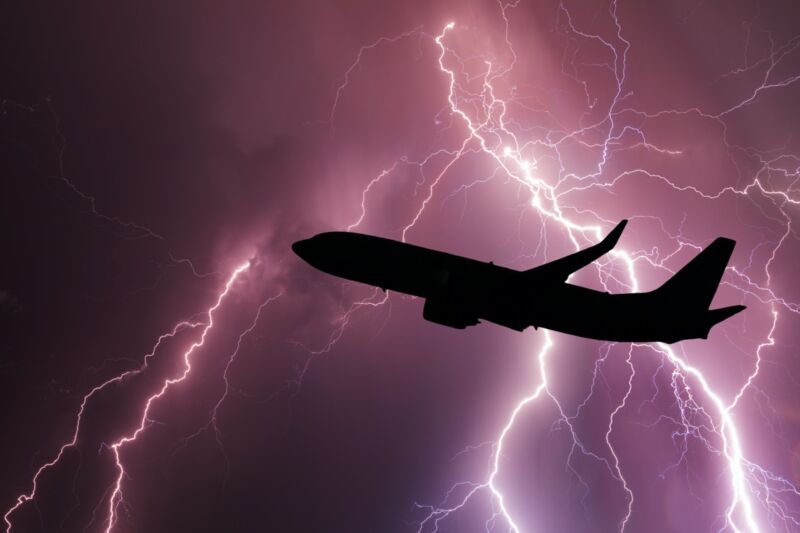How “St. Elmo’s fire” could help protect aircraft from lightning strikes

Enlarge / MIT scientists think the corona discharge known as "St. Elmo's fire" could help reduce the risk of aircraft being struck by lightning during thunderstorms. (credit: Anton Petrus/Getty Images)
The electrical phenomenon known as St. Elmo's fire manifests during strong thunderstorms as a flash of blue light, usually at the tips of electrically conductive structures like cell phone towers, telephone poles, and ship masts-which is how it got its name, in honor of the patron saint of sailors, St. Erasmus of Formia. On the ground, St. Elmo's fire glows more brightly in windy conditions because the wind helps further electrify the surrounding air.
But MIT scientists have discovered that wind has the opposite effect on ungrounded structures such as airplane wings and turbine blades, according to a recent paper in the Journal of Geophysical Research: Atmospheres. They discovered this while investigating the possibility of using St. Elmo's fire to control the electrical charge of an aircraft, thereby helping protect it from lightning strikes.
St. Elmo's fire is not a form or lightning; it's essentially a continuous electric spark known as a corona discharge, like the glow of a neon sign. The friction that builds up in storm clouds gives rise to an electric field extending to the ground. If it's strong enough, the friction breaks apart surrounding air molecules, ionizing the air to produce a plasma (charged gas). All the excess electrons knock the plasma molecules into an excited state, which then emit photons to produce that telltale glow. The color of the glow depends on the type of gas being ionized. Since Earth's atmosphere is primarily made up of nitrogen and oxygen, the glow takes on a blue or violet hue.
Read 12 remaining paragraphs | Comments